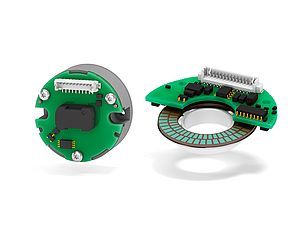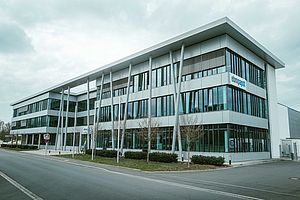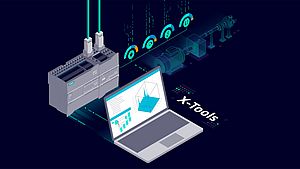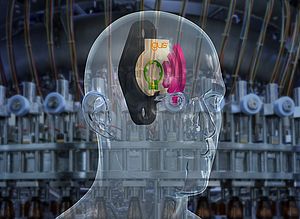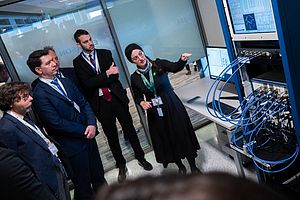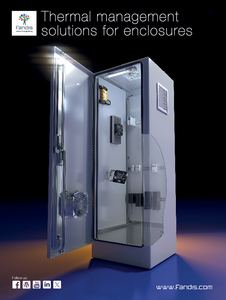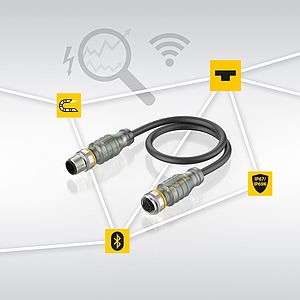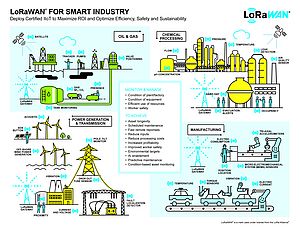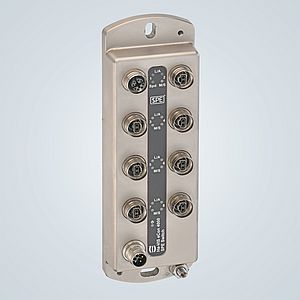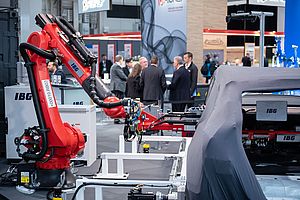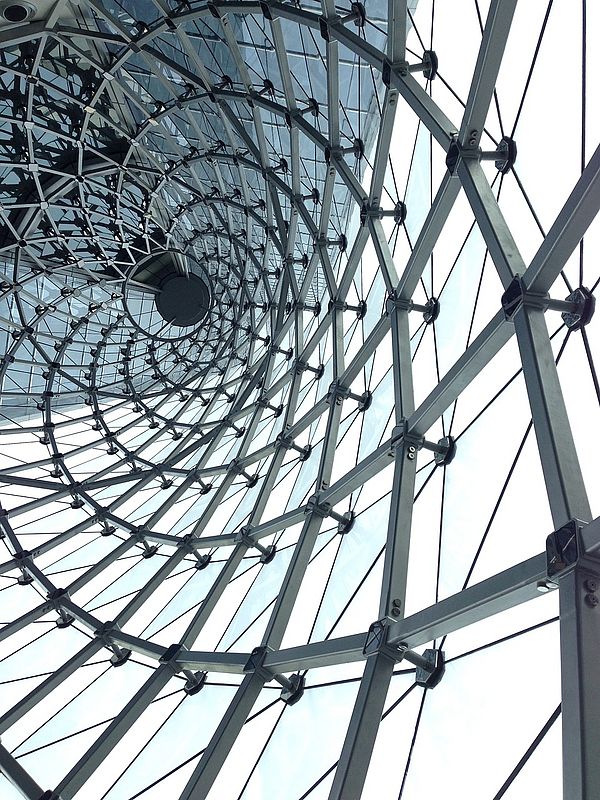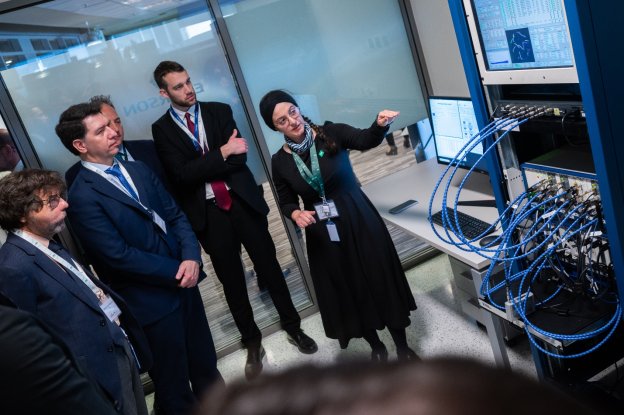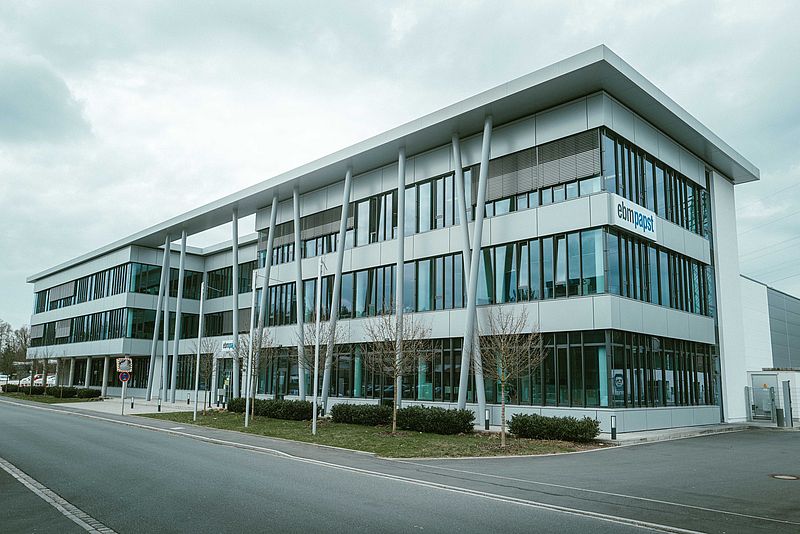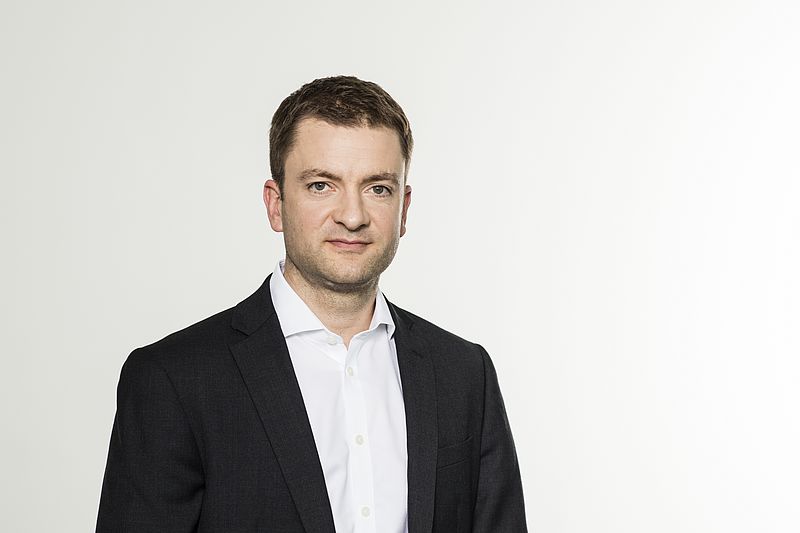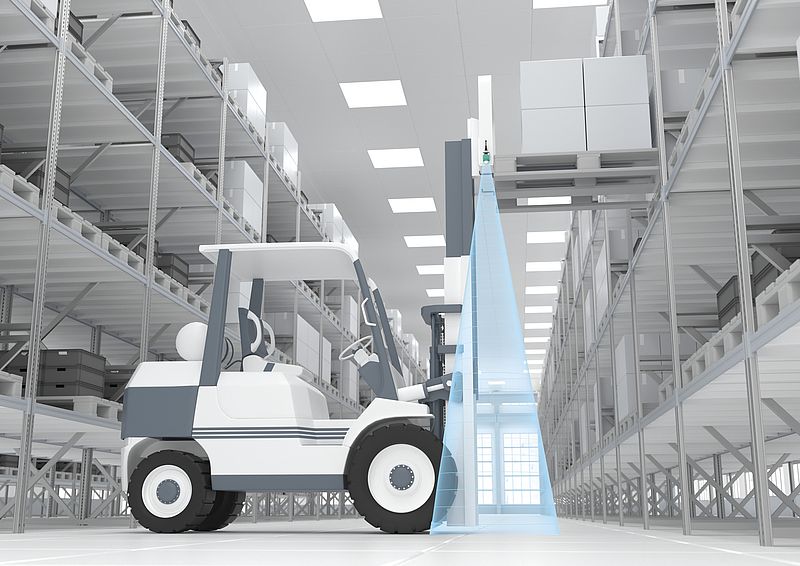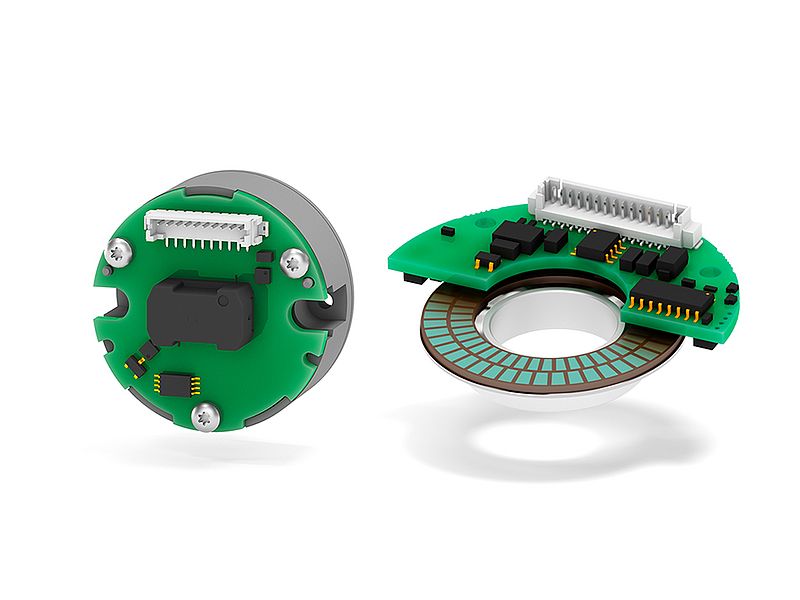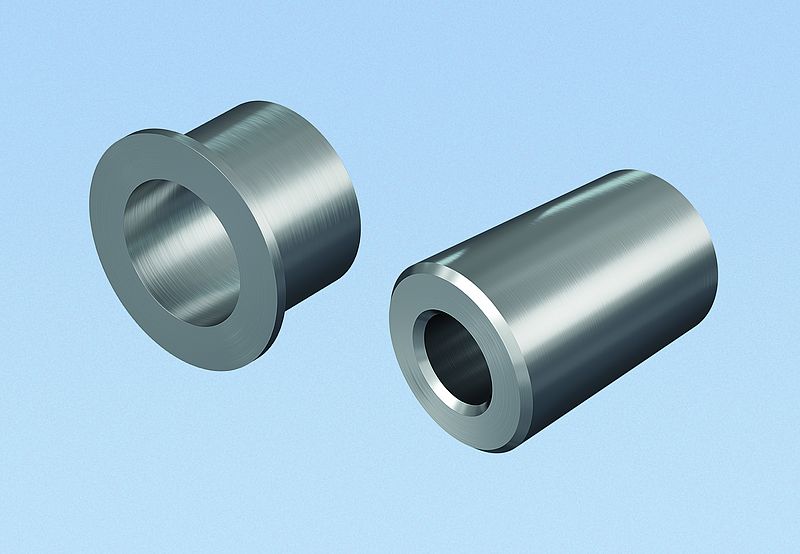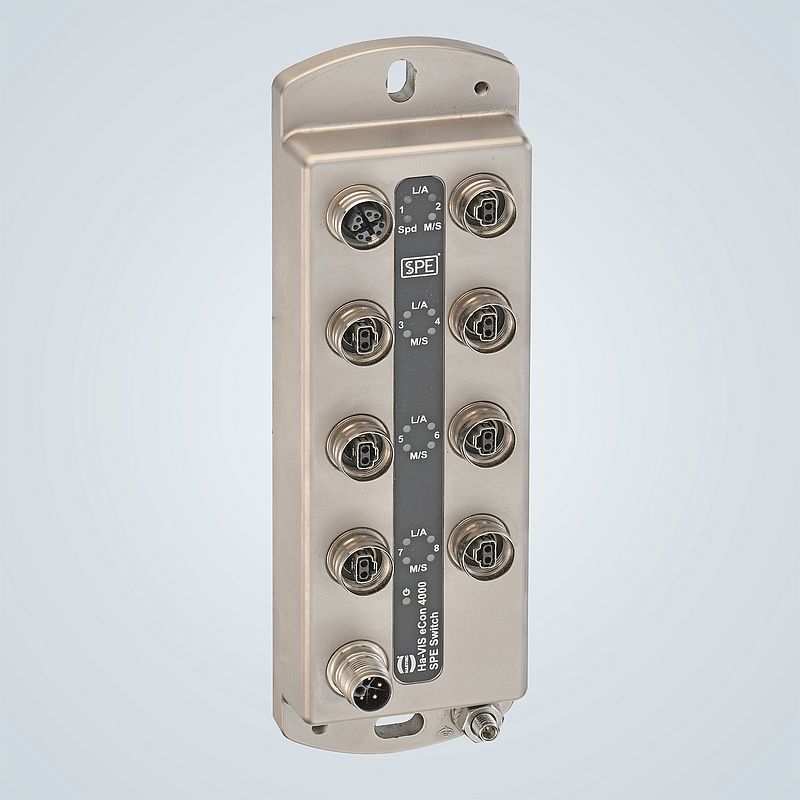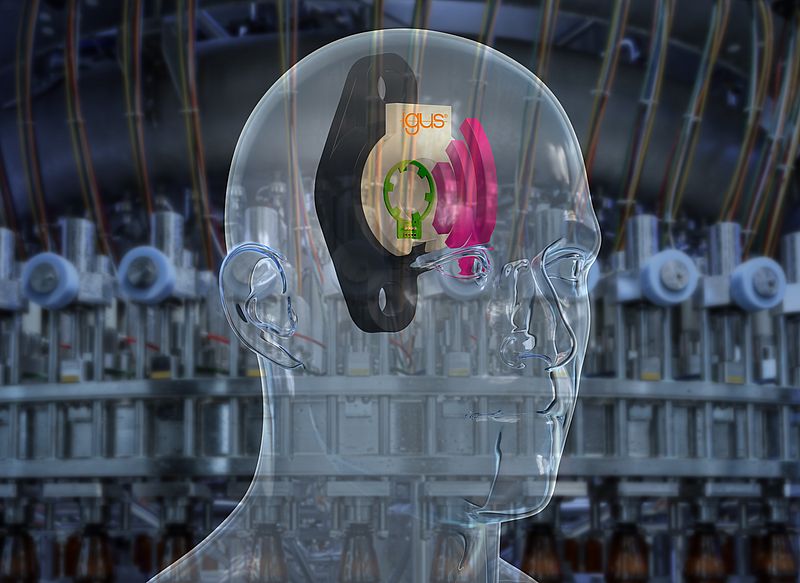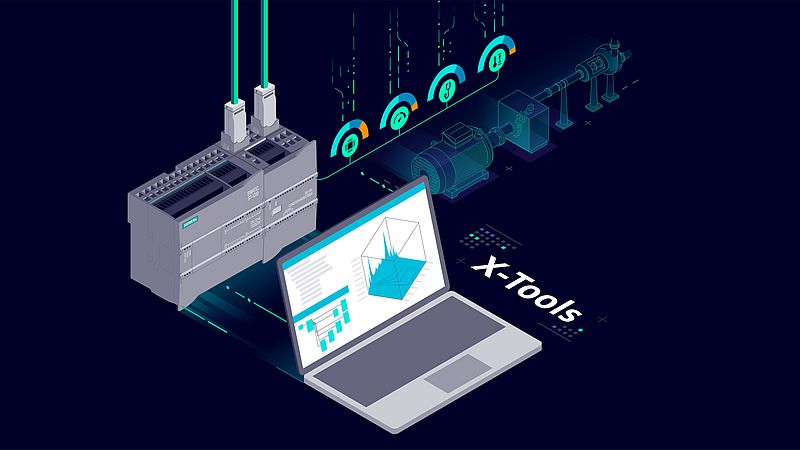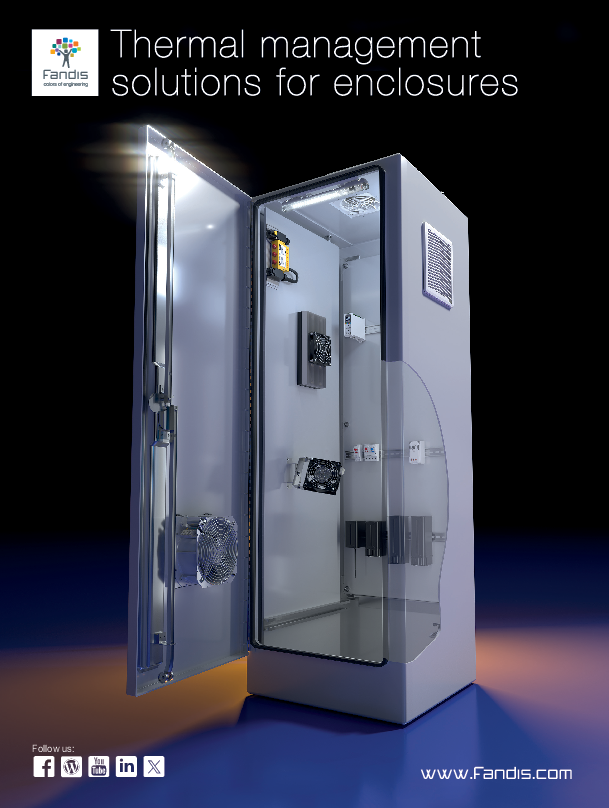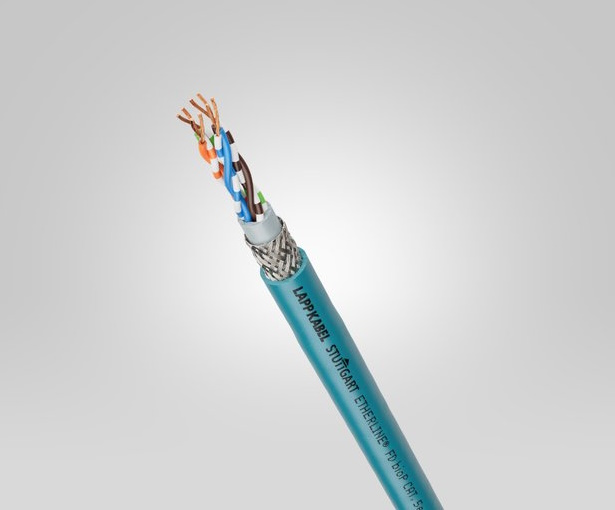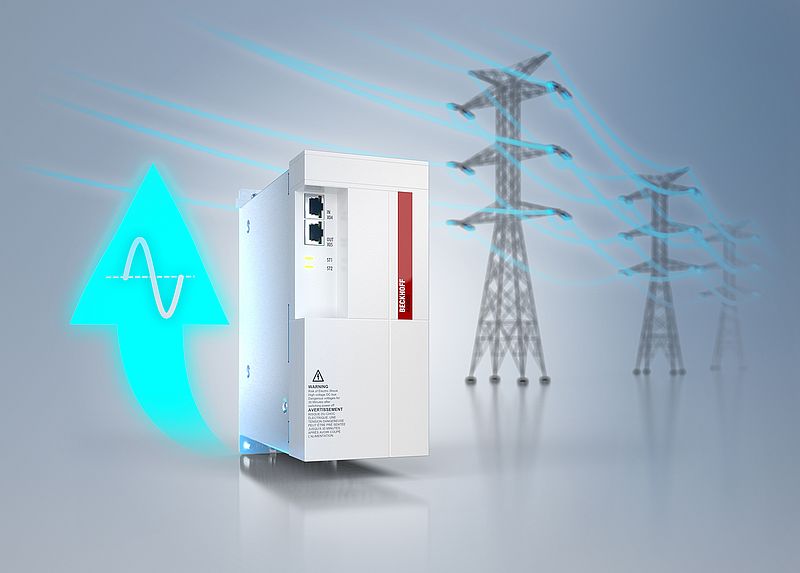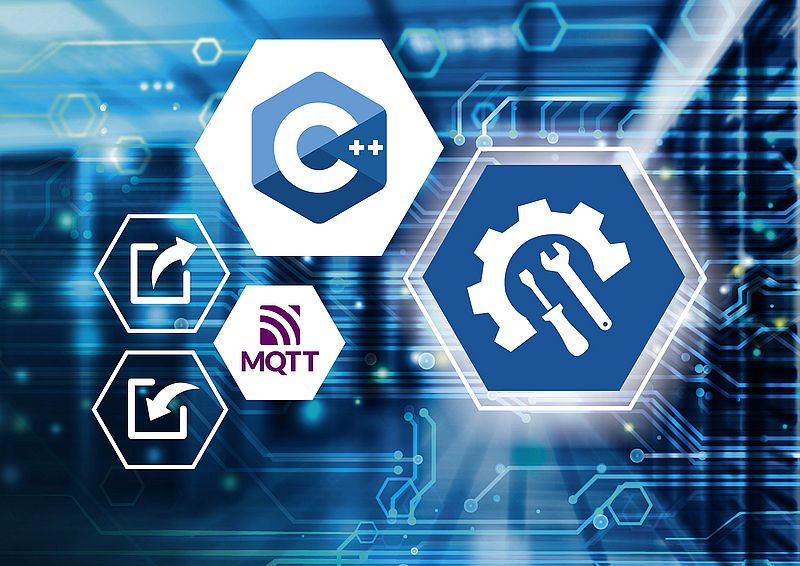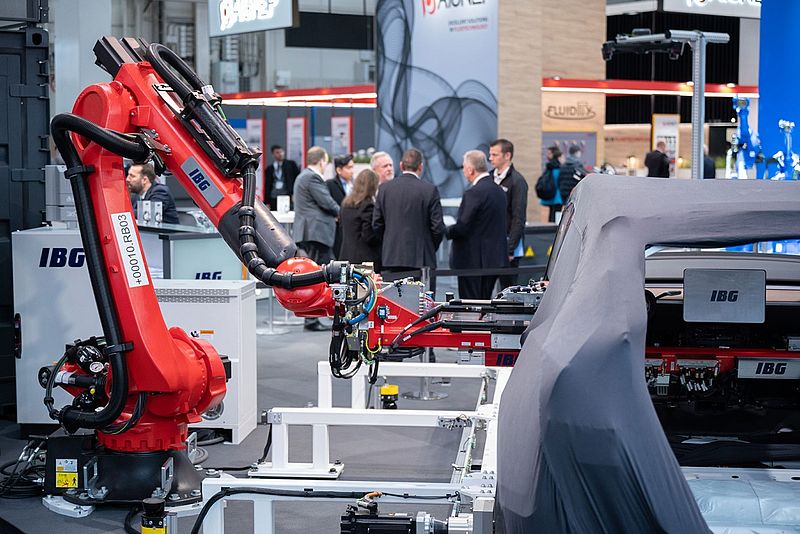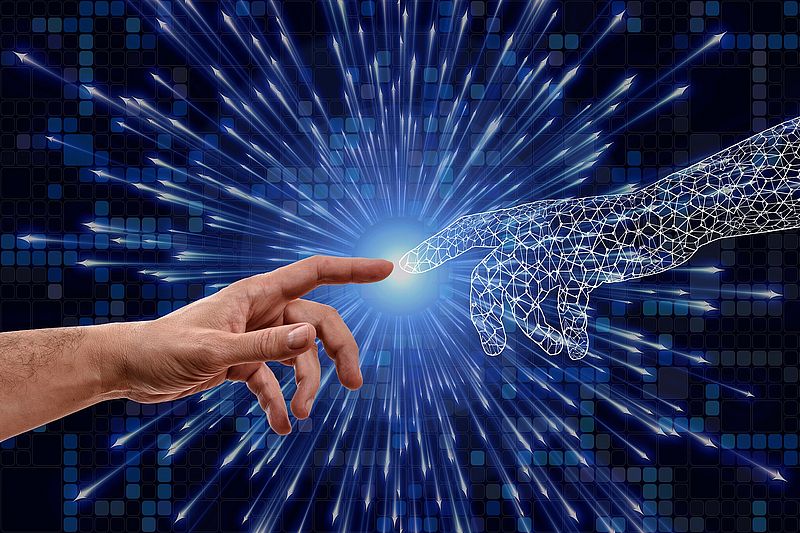Quick access
Contents2 Industry News I3 Industry News II4 Interview: Hubert von Monschaw, Deutsche Messe5 Pepperl+Fuchs: Hall 9 D766 Unitronics (Ad)7 LIKA Electronics: Hall 9 F59 | MBO Osswald: Hall 4 C51 | Harting: Hall 11 C43118 igus: Hall 6 F26 | Siemens: Hall 9 D539 Fandis (Advertisement): Hall 4 E7210 LoRa Alliance: Hall 14 Stand H0611 Lapp: Hall 11 C15 | Hans Turck: Hall 9 H5512 Beckhoff Automation: Hall 9 F06 | Softing: Hall 15 F4813 Application Park Robotics: Hall 514 Omron, Dassault Systems: Hall 17 E1615 Index16 Contacts17Companies in this issue
Fandis S.p.A.10 Hans Turck GmbH & Co. KG12 Lika Electronic Srl8 mbo Osswald GmbH & Co KG8 Unitronics7Beckhoff Automation GmbH13 Deutsche Messe AG5 Fandis S.p.A.10 Hans Turck GmbH & Co. KG12 HARTING KGaA8 igus GmbH9 Lika Electronic Srl8 mbo Osswald GmbH & Co KG8 Pepperl+Fuchs SE6 Siemens AG9 Softing Industrial Automation GmbH13 U.I. LAPP GmbH12 Unitronics7
#2 Contents
#3 Industry News I
#4 Industry News II
#5 Interview: Hubert von Monschaw, Deutsche Messe
#6 Pepperl+Fuchs: Hall 9 D76
#7 Unitronics (Ad)
#8 LIKA Electronics: Hall 9 F59 | MBO Osswald: Hall 4 C51 | Harting: Hall 11 C4311
#9 igus: Hall 6 F26 | Siemens: Hall 9 D53
#10 Fandis (Advertisement): Hall 4 E72
#11 LoRa Alliance: Hall 14 Stand H06
#12 Lapp: Hall 11 C15 | Hans Turck: Hall 9 H55
#13 Beckhoff Automation: Hall 9 F06 | Softing: Hall 15 F48
#14 Application Park Robotics: Hall 5
#15 Omron, Dassault Systems: Hall 17 E16
#16 Index
#17 Contacts
Congress for Lightweight Construction Takes Place During HANNOVER MESSE
5th Lightweighting Summit: Lightweight construction as a transformation technology for the resource turnaround
The 5th Lightweight Construction Summit, organised by the German Federal Ministry of Economics and Technology (BMWK), will take place at HANNOVER MESSE on 23 April 2024. This year's congress will highlight the key role of lightweight construction concepts in the transition to a resource-efficient economy, focusing on lightweight construction as a transformation technology for the resource transition. A successful resource transition aims to extract and use raw materials in a sustainable way and then return them to the cycle. In addition to lightweight construction, the circular economy is also of crucial importance. Six experts will discuss this topic in a panel discussion.
The two keynote speeches will be given by Prof. Dr.-Ing. Holger Hanselka, President of the Fraunhofer Gesellschaft, and Prof. Dr.-Ing. Markus Milwich, spokesman of the Baden-Württemberg Lightweight Construction Alliance. A new feature of the programme will be five promotional presentations on lightweight construction, in which various companies and research institutes will present innovative R&D projects in the field of lightweight construction.
Dr. Anna Kleissner, Managing Director of Econmove GmbH, is currently creating a "lightweight construction satellite account" for Germany, commissioned by the BMWK and aimed making the gross value added and job opportunities offered by lightweight construction more visible and tangible for policymakers, businesspeople and society in general. She will give a motivational speech with a report on the current state of progress.
For more information, visit: https://geschaeftsstelle-leichtbau.de/5-lightweighting-summit
You want to be part of the action? Follow the link to the registration page of HANNOVERMESSE for your free ticket.
Premiere at HANNOVER MESSE: The All Electric Society Arena
At the event from April 22 to 26 the new format points the way to a carbon-neutral industrial society
At the upcoming HANNOVER MESSE, the concept of the All Electric Society will be highlighted for the first time and on a large scale with its own arena. The arena will be organized by the ZVEI together with well-known exhibitors. As stated by Gunther Koschnick, Head of Industry at ZVEI, "The aim of the All Electric Society Arena is to discuss the possibilities of an energy supply largely based on renewable energies, and to put them into practice." As part of a varied programme of presentations, industry experts, scientists and politicians will shed light on how the future will be increasingly electric. The arena is not only an integral part of the daily theme tours. It is also directly connected to the ZVEI stand in the middle of Hall 11, Stand B58.
Koschnick continues, "The ZVEI target image of the All Electric Society represents the industry's contribution to achieving the agreed climate targets." "Direct electrification of technologies and processes, as well as sector coupling and intelligent storage technologies such as hydrogen and power-to-X, will play an important role in this process. HANNOVER MESSE is therefore well positioned to adopt the All Electric Society as the energy efficiency scenario for a carbon-neutral industrial society."
A carbon-neutral industry is an ideal framework for all initiatives related to this year's main theme, "Energizing a Sustainable Industry". According to Hubertus von Monschaw, Global Director Trade Fair and Product Management HANNOVER MESSE at Deutsche Messe, the All Electric Society Arena will demonstrate how the industry can contribute to achieving climate goals.
The All Electric Society Arena at HANNOVER MESSE is supported by DKE, Eaton, Finder, Harting, Pepperl+Fuchs, PHOENIX CONTACT, Rittal, Schneider Electric, Siemens, Wöhner and Deutsche Messe.
You want to be part of the action? Follow the link to the registration page of HANNOVERMESSE for your free ticket.
Technology Collaboration for Space System Development and Testing
Emerson and the European Space Agency unveil new Open Innovation Space Laboratory
Emerson’s Test & Measurement Business Group (formerly NI), in collaboration with the European Space Agency (ESA), announced today their collaboration to create the new Open Innovation Laboratory located in Debrecen, Hungary. This facility will help redefine space system development and deployment by introducing advanced test strategies aimed at reducing costs and mitigating risks. This cooperation is also in line with the industrial policy objectives of the Hungarian government.
Located within Emerson’s Test & Measurement offices in Debrecen, the Open Innovation Laboratory is accessible to projects that meet specific criteria established by the ESA’s Navigation Innovation and Support Program (NAVISP). The lab is outfitted with the latest modular instrumentation and application software, ensuring that it remains at the forefront of technological advancements in the space market.
“The new lab embodies the shared vision of Emerson’s Test & Measurement business and the European Space Agency to accelerate innovation within the space industry,” said Ritu Favre, group president, Emerson’s Test & Measurement business group. “By focusing on the development of comprehensive test strategies from the early stages of development, engineers can avoid late-stage problem discovery, which can lead to significant cost overruns and delays.”
“We are pleased that the ESA’s NAVISP has supported the establishment of the new Open Innovation Laboratory in Debrecen. This builds on a productive relationship established over several years between our organizations, and I am confident it will pave the way to new market opportunities for innovative Position, Navigation and Timing (PNT) solutions and services,” said Rafael Lucas Rodriguez, head of ESA’s NAVISP Technical Programme Office. “The infrastructure for PNT is rapidly evolving, and the laboratory will provide industry with the tools to test and prototype new technologies addressing the emerging market areas such as Controlled Radiation Pattern Antennas (CRPA) to provide resilient positioning to the users.”
Key to the laboratory’s capabilities is the use of Hardware-in-the-Loop (HiL) test systems, an enabling technology that replicates the operational environment for subsystems under test. The lab is also equipped with modular instrumentation and application software for the company’s Wideband Multichannel Phase Aligned Transceiver (MPA) System, S-Parameters, pulse-to-pulse stability, power added efficiency measurement and capability to emulate a Wideband Satellite Link.
By leveraging Emerson’s modular and scalable approaches, the facility aims to transform the design of complex satellite system-of-systems. This includes a focus on RF/micro-wave payloads based on wideband and active multi-beam antenna, on-board digital processor and regenerative software defined radio.
Siemens To Acquire Industrial Drive Technology Business of ebm-papst
The ebm-papst IDT-division ia a supplier forintelligent mechatronic systems and employs around 650 people
Siemens AG has signed an agreement to acquire the industrial drive technology (IDT) business of ebm-papst. The business, which employs around 650 people, includes intelligent, integrated mechatronic systems in the protective extra-low voltage range and innovative motion control systems. These systems are used in free-range driverless transport systems. The planned acquisition will complement the Siemens Xcelerator portfolio and strengthen Siemens’ position as a leading solutions provider for flexible production automation.
Cedrik Neike, member of the Managing Board of Siemens AG and CEO of Digital Industries, said: “Ebm-papst’s innovative portfolio of mechatronic drive systems and its highly qualified people are an excellent fit for Siemens. The acquisition will enable us to tap new business and customer potential in the rapidly growing market for intelligent, battery-powered drive solutions in intralogistics as well as mobile robot solutions.”
IDT products are intelligent, integrated mechatronic systems, which support the automation and digitalization of production processes. This acquisition will be a strong addition to the Siemens Xcelerator portfolio. Through their use in mobile robots and driverless transport vehicles as well as in the automation of auxiliary processes, such as the retooling of modern production machines, they are an important lever for greater flexibility and productivity. For this reason, high market growth is expected in this market segment.
The integration of the IDT portfolio into the existing automation portfolio and the utilization of Siemens’ global sales network will open up new market access and generate significant business potential in the area of flexible and autonomous factory automation. The transaction is to be completed by mid-2025, subject to the necessary foreign trade and merger control approvals. The IDT business of ebm-papst is located in St. Georgen and Lauf an der Pegnitz, Germany, and in Oradea, Romania. The parties have agreed not to disclose the purchase price.
The Added Value of the Show Is Generated by the Cross-Industry Interaction of Technologies
IEN Europe spoke to Hubertus von Monschaw, Global Director Trade Fair and Product Management HANNOVER MESSE at Deutsche Messe AG, about the current challenges facing the industry and HANNOVER MESSE 2024.
Automation, Industry 4.0
IEN Europe: The theme of HANNOVER MESSE 2024 is "Industrial Transformation - Energizing a Sustainable Industry". How can the event specifically help trade visitors achieve climate and efficiency targets of their organisation?
von Monschaw: HANNOVER MESSE focuses on themes such as automation, digitalisation and electrification to drive a climate-neutral and competitive industry. The event provides guidance to visitors interested in these topics. Hall 13 specifically highlights the hydrogen industry, with a focus on green hydrogen produced through renewable energy sources like electrolysis. This offers a climate-neutral alternative for industrial applications. Automation technology is a core aspect of HANNOVER MESSE, catering to the growing demand for precision, efficiency, and data transparency in production and business processes. The exhibition will feature a wide range of solutions from exhibitors, including robotics, drive technology, sensor technology, AI, cloud, and control technology, encompassing both compact sensors and complex automation solutions.
IEN Europe: The idea of Industry 4.0 was born in Hannover almost 15 years ago. What do you think will be the focal points for HANNOVER MESSE and its exhibitors in 2024 to concretely advance these ideas?
von Monschaw: On the one hand, of course, with our exhibitors, but we are also organizing an AI Day on the Industrial Transformation Stage in Hall 3 on the Tuesday of the trade fair. Our partners from the Industrial AI Podcast are designing the program. AI in industry is more than just a huge language model and poses special challenges. Use cases will be presented and best cases discussed on the stage.
IEN Europe: The event is always characterised by its comprehensive and informative conference stages. What will be the focal topics this year?
von Monschaw: e are creating a varied and exciting program on our main stages. On the Industry 4.0 stage, experts will present the latest trends and innovations – from the administration shell to OPC UA, machine learning, cloud and edge computing to data rooms. The Energy 4.0 Stage will focus on topics relating to an energy-intelligent, climate-friendly and sustainable future, the Tech Transfer Stage is the communication and competence platform for the discourse between science, business and politics, and the Industrial Transformation Stage focuses on the trend topics of HANNOVER MESSE across all sectors.
IEN Europe: Norway is the partner country of HANNOVER MESSE 2024. What impetus can this partnership generate?
von Monschaw: Norway will be presenting itself at HANNOVER MESSE as an innovative and reliable energy partner. The partner country's motto is "Norway 2024: Pioneering the Green Industrial Transition". This underlines Norway's goal to play a key role in the development of solutions in the field of renewable energies, carbonneutral production and the digitalization of industry. At the "North Sea Energy Hub" conference on April 23, politicians and experts from Norway and Germany will discuss the energy transition with a focus on political conditions as well as technological developments and applications.
IEN Europe: In your opinion, what should every trade visitor have seen before travelling home?
von Monschaw: HANNOVER MESSE is unique with its wealth of innovations. It is impossible for me to see everything, but I can only recommend that all visitors take the time to visit the trade fair and think outside the box, because the cross-industry interaction of different technologies is what makes HANNOVER MESSE so special.
IEN Europe: Thanks for these insights!
You want to be part of the action? Follow the link to the registration page of HANNOVERMESSE for your free ticket.
Radar Safety for Intralogistics
Air traffic and shipping are no longer conceivable without radar technology. Their electromagnetic waves provide extremely reliable signals for object detection and collision protection. What has proven itself over long distances at sea and in the air is just as useful at near range: radar also ensures precision and safety when controlling autonomous vehicles and machine booms. The new radar sensors from Pepperl+Fuchs are optimized for use in the intralogistics and material handling sections, among others.
Sensor Technology
Radar (RAdio Detection And Ranging) is based on the transmission of electromagnetic waves and the detection of their reflection. This method makes it possible to determine the distance to objects in the path of the waves - or moving in their propagation range - at practically the speed of light. Pepperl+Fuchs has developed a series of compact sensors that make this robust principle of measurement usable for safeguarding machine movements in the materials handling and warehousing section.
Stable signaling, high EMC
The devices use the frequency-modulated continuous wave (FMCW) method, which ensures particularly stable signaling. The frequency band of 122-123 GHz ensures strong resistance to interference such as dust, steam, temperature fluctuations and weather conditions. In terms of electromagnetic compatibility (EMC), the devices achieve values comparable to classification E1 in almost every category. Reliable measurement is therefore guaranteed even in the case of conducted and high-frequency radiation with high interference levels. From the reflected waves and the derived measurement data, the devices can determine the distance, direction of movement and speed of objects in the detection area with high accuracy.
The sensors are housed in a casing measuring just 40x40x83 mm, so they can easily fit into tight spaces. The sensor head can also be rotated and swivelled so that it can be optimally aligned to the target area in practically any installation situation. Equipped with IP68/69 degrees of protection, the device is also well suited for harsh environments or constant switching between indoor and outdoor use. The new product series also allows great flexibility when it comes to electrical connections. In addition to the standardized M12 connector plug, connector types such as DEUTSCH or AMP Superseal are available specifically for use in vehicles.
Integration and diagnostics with CANopen
The integrated CANopen interface is responsible for transmitting measured values and parameterization commands. Integration into an existing CAN bus infrastructure is therefore very simple and possible without complex individual wiring. Device parameters and extended functions can be accessed either via the CAN network or with the help of the FDT framework program PACTware and a Device Type Manager (DTM). The sensor can thus be adapted to the respective application with minimal effort.
The connection via CANopen also opens up the possibilities for detailed status monitoring. This is an important prerequisite for use in safety-relevant applications, which is possible in conjunction with a fail-safe PLC. Thanks to the features of the sensors and their diagnostic capability, a single device is sufficient for safety level PL c (Cat. 2) and SIL 1. When integrated into a safety concept and with a redundant sensor design, the requirements for PL d (Cat. 3) and SIL 2 are met. Several devices can be used in close proximity to each other as they do not interfere with each other's function. A sampling rate of up to 200 Hz can be parameterized for applications with fast response times.
Adapted measuring mode
Electromagnetic waves are not reflected to the same extent by all materials; this is most pronounced with metal. With wood or plastic, on the other hand, the proportion of penetration clearly outweighs that of reflection. Depending on the type of application, it may make sense to fit corner reflectors made of sheet metal in the detection area. These are available as standard accessories.
However, the radar sensors are also able to largely compensate for the different reflective properties of the objects in the detection area or make use of them. For example, non-metallic objects can be specifically masked out by setting the appropriate parameters and selecting the measurement mode. In such an operating mode, the sensor then reliably detects the actual target object behind a partially transparent object that is located between them.
The radar sensors offer three different measurement modes for fine adjustment:
- "First object" - material-independent detection of the object closest to the sensor. Objects within the extension range or radius of action of the vehicle and boom are detected in all cases.
- "Strongest reflection" - detection of the object with the best reflection properties
- In "Fastest object" mode - detection of the object that moves towards or away from the sensor the fastest. This measurement mode is intended, among other things, for path monitoring and collision protection in driverless transport systems.
Application examples
Automatic reduction of maximum speed - Forklift trucks and other transport vehicles may and should drive faster on outdoor storage areas than in production halls and warehouses. However, a reduced maximum speed must be maintained there. An upward-facing radar sensor on the vehicle detects the hall roof on entry. The device gives the signal for the automatic speed restriction and for its lifting after the exit.
Height control for forklift forks - The higher the forks are, the lower the permissible speed of the forklift truck. The approval ratio between lifting height and load weight is also precisely defined. The radar sensor directed from the fork to the ground detects the lift height in "strongest reflection" mode and suppresses interfering objects. The height control can also be used to control the pallet insertion into the high rack: The sensor signal indicates whether the pallet base has reached the necessary height.
Collision protection for overhead crane - In the case of an overhead crane with several crane bridges mounted on its rails, the sensor monitors the distance between these elements. Slow travel is triggered when approaching and a safety stop is triggered if there is a risk of collision.
Modular Encoders for Precise Motor Control
Compact, flat, and lightweight models with high resolution and fine accuracy
Motors & Drives, Sensor Technology
Lika Electronic's AMM33 miniature encoder is equipped with a 6 mm blind hollow shaft and is ideally suited for integration into very small size motors. The SMAR1 off-axis encoder fits perfectly into hollow shaft motors and axes with larger diameter up to 18 mm.
Energy harvesting technology
The AMM33 is absolute and multiturn and integrates the Energy Harvesting Technology for battery- and gear-less operation. It can be equipped with SSI and BiSS interfaces. The singleturn resolution is up to 18 bits, the number of turns is up to 24 bits.
The SMAR1 has both incremental and absolute outputs (Line Driver, SSI, BiSS, and SPI). Incremental version offers a resolution up to 65,536 PPR and additional UVW commutation signals. The absolute version has a resolution between 16 and 35 bits and additional TTL signals for speed control.
To fulfil specific customer requirements mechanical and electrical characteristics can be customized.
Sleeves Configurator for Individual Part Design
Innovative online tool for individual designs with a wide range of characteristics
Industrial Equipment & Supplies
mbo Osswald has developed a new online tool for the world of linking technology: the innovative sleeves configurator. This tool was developed to design individual parts precisely and in line with requirements and is suitable for use in very many different industry applications. Sleeves are well known as versatile components and are vital when precise spacings have to be adhered to in complex engineering designs. Sleeves are also often referred to as spacers, spacing rings, spacer tubes, bushes or distance rings.
Easy overview for characteristics and prices
The intuitive, easy-to-operate and user-friendly platform allows users to adapt sleeves to their own individual specifications and order the corresponding parts. What makes the sleeves configurator so special is its transparency: users see detailed information about every sleeve characteristic, including product details, a 3D model, technical drawings, test certificates, an express manufacturing option and dynamic price specifications.
Users can choose from a wide range of characteristics, including material, surface properties, shaft diameter, length, collar and wall thickness. When the user has chosen the required specifications, the configurator immediately provides detailed information about the part, including price, delivery time, a sketch and 3D model. Pricing is flexible and scaled in the light of the ordered quantity and users have full control over configuration and costs.
Compact Single Pair Ethernet Switches
Robust metal housing with IP67protection for outdoor use
Automation
HARTING has launched the Ha-VIS eCon 4000 M12T1 SPE, a single pair Ethernet (SPE) switch with IP67 protection. Designed to with- stand harsh outdoor environments (tested for rolling stock according to EN 50155), the rugged metal housing provides secure communi- cations. The transmission is pro- tected against shock and vibration and operates over a wide temperature range (-40 to +70°C). The switch is extremely compact (191 x 60 x 42 mm), offers eight ports and is available in two different versions. The eCon 4017GBT-BXT has a Gigabit uplink to the Ethernet network (M12 X-coded) and integrates up to 7 SPE devices via 100BaseT1. The eCon 4035GBT- BXT has a Gigabit uplink and provides five 100BaseT1 and two 1000BaseT1 ports as SPE interfaces. Automatic master/slave configuration is a new feature for an unmanaged switch. The master and slave roles are automatically defined between the communication partners when a connection is established. The Ha-VIS eCon 4000 M12T1 switches are ideal for railway, general vehicle and automation applications. They provide Ethernet data transmission in harsh environments. Applications include produc- tion lines, camera-based quality assurance, passenger and driver information systems, video surveillance and ticketing systems.
Fixed Flange Bearings Become Intelligent
Expensive machine and vehicle breakdowns due to undetected faults in heavy-duty fixed flange bearings: these will soon be a thing of the past thanks to a new generation of two- and four-hole fixed flange bearings. Their special feature is that the bearings, which are made of lubrication-free high-performance plastic, are equipped with miniature wireless sensors, enabling condition monitoring and predictive maintenance.
Automation, Industry 4.0, Motors & Drives
A technician looks at his smartphone: a conveyor belt of a beer bottle discharge system contains a fixed flange bearing that is approaching its wear limit. Previously, the problem might not have been detected and cause an expensive system failure. Today, however, the technician can simply replace the bearing during a break in production knowing definitely that the hundreds of other bearings also communicate with him.
Flange bearings transmit their status wirelessly
And this is how the new Industry 4.0 bearings work: igus integrates an abrasion sensor into the polymer spherical ball: a thin circuit board close to the running surface. There is also a battery for the power supply without cables. This means that the bearing for spherical levelling can continue to move independently. Wear interrupts the conductor paths of the circuit board. If the electronics lose the signal of a conductor path, they know that the wear has reached a certain level. The sensor transmits a digital signal via a long-range network (LoRa), a wireless standard for the Internet of Things that is known for its energy efficiency. The receiver is the i.Cee switch cabinet module, which analyses the data. The associated software now knows that the conductor path is worn out, and infers the percentage of abrasion. Over time, the sensor itself wears away layer by layer - parallel to the bearing's running surface. It continues to send out signals that allow conclusions to be drawn regarding the bearing's condition. Users can see the remaining service life and when maintenance is due on a web-based dashboard, which they can access from anywhere in the world with a PC, tablet or smartphone.
Luxembourg's national railway company is the first pilot customer
The new fixed flange bearings are currently in the prototype phase. However, they have already convinced one pilot customer: the Société National des Chemins de Fer Luxembourgeois (CFL). Luxembourg's national railway company operates a 200-metre washing system that cleans local and long-distance trains every day. In the past, gearbox malfunctions on the washing trolley repeatedly led to costly system failures. The operator therefore abandoned lubricated standard ball bearings and instead used the networked spherical balls from igus in the UC bearing housings. The advantage is that the spherical balls made of high-performance plastics are corrosion-free, resist chemicals and enable low-friction and maintenance-free dry operation thanks to incorporated solid lubricants.
Comprehensive Digitalization Offering Along the Drivetrain Value Chain
Siemens presents innovations for greater efficiency and sustainability from design to condition monitoring at Hannover Messe
Automation, Motors & Drives
At this year's Hannover Messe, Siemens is presenting Siemens Xcelerator for Digital Drivetrain, its comprehensive and integrated digitalization offering along the drivetrain value chain comprised of two areas: Drivetrain Design (dimensioning and simulation) and Drivetrain Health (connectivity and optimization). Drivetrain Design includes engineering and simulation tools for the efficient dimensioning, validation, testing, virtual commissioning, and optimization of drivetrains in the design phase of a machine or system.
Drivetrain Health offers hardware- and software-based sensor and connectivity solutions for data acquisition as well as coordinated analysis software tools. These tools provide insights into the behavior of the drivetrain and enable powerful condition monitoring. Siemens is thus demonstrating how customers can combine the real and digital worlds of drive technology to achieve efficiency and sustainability along the entire drivetrain value chain.
For efficient selection, validation, virtual commissioning, and optimization of drive systems
In the area of simulation and virtual commissioning, Siemens is launching DriveSim Engineer, the successor to DriveSim Advanced. DriveSim Engineer makes it possible to create a digital twin of the drive in a virtual environment with all the parameters and configurations that correspond to the real drive. In addition to the new SINAMICS S210 series, the new SINAMICS G220 frequency converters are now also available in the tool. The digital twin technology and intuitive user interface allow users to simulate, commission, and optimize the behavior of drive systems in a virtual environment before installing them in the real world. This significantly increases efficiency and productivity in the engineering of drive systems and machines. Thanks to its integration in TIA Portal (Startdrive), DriveSim Engineer is a seamless part of (virtual) commissioning and makes training in additional tools superfluous. Users benefit from shorter commissioning times, more accuracy in detecting and resolving potential problems with drive systems, and real-time insights and analyses for improving the overall performance of drive systems.
Intelligent condition monitoring for a healthy drivetrain
Siemens is presenting two intelligent solution packages for high-performance condition monitoring: a cloud-based solution and a PC-based solution. The two complement each other and can be used according to requirements. With Drivetrain Analyzer Cloud, Siemens combines the two applications Analyze MyDrives and Sidrive IQ Fleet into one innovative app. In addition to a new user interface, Drivetrain Analyzer Cloud offers users the option of connecting various drive components such as frequency inverters, motors, or other rotating machines to a drivetrain and monitoring the drivetrain’s status. Another new product is the Connection Module IOT (CM IOT), which can be installed and put into operation in just a few minutes. Highlights include the improved, additional sensor technology, the new alternative energy concept via an external 24 V connection, and a housing and component update. The module measures raw data and automatically transfers it to the cloud. Drivetrain Analyzer Cloud provides immediate information about anomalies and specific error patterns such as bearing damage, imbalances, or misalignments, thereby helping to prevent unplanned downtime. The cost-efficient solution combines condition monitoring with decarbonization by supplying the user with important additional data and recommendations for action regarding CO₂ emissions, energy consumption, and energy costs. Another new feature is pump analytics, which Drivetrain Analyzer Cloud can use to calculate and analyze system efficiency and specific pump parameters.
In addition to the cloud solution, Siemens is also presenting another new product, a PC-based condition monitoring solution consisting of three components: the new VIB (Vibration) and FPP (Fast Process Parameters) (CM FPP) connection modules, the Drivetrain Analyzer X-Tools software, and the corresponding sensors and sensor cables. The CM VIB and CM FPP connectivity modules record vibration and analog signals at a sampling rate of 96 kHz. All sensor information can be recorded and transmitted synchronously. Now users can also analyze high-speed, intermittent machines such as automotive presses, cranes, or machine tools with two synchronous axes. Drivetrain Analyzer X-Tools is an expert tool for highly dynamic data acquisition up to 192 kHz as well as for manual data analysis. Because X-Tools can connect to almost any data source, users can ideally use X-Tools as an analytics toolbox to link their own analytics with elements of a preconfigured library. For example, the software can be used to monitor bearing temperature, housing vibrations, and oil lubrication, meaning pressure and flow, in heavy machinery equipped with plain bearings. In this way, Drivetrain Analyzer X-Tools and the new connectivity modules contribute to higher machine availability, better performance, and a longer system service life.
Flexibility in Connectivity for IIoT
LoRa Alliance presents solutions for Industrial IoT in Hannover
The LoRa Alliance®, the global association of companies backing the open LoRaWAN® standard for the internet of things (IoT) low-power wide-area networks (LPWANs) presents solutions of its members Hall 14 Stand H06 at Hannover Messe 2024. The LoRa Alliance will also host a panel titled “Flexibility in Connectivity for Industrial IoT (IIoT): Driving the Revolution of Industry 5.0 with LoRaWAN” on Thursday, April 25, at 2:15 p.m. on the 5G & Industrial Wireless Conference Stage in Hall 14.
At the show, the LoRa Alliance and member companies co-exhibiting on the stand will illustrate the role of connectivity in industrial digital transformation. Industry 5.0 represents the next evolutionary phase of industry, which focuses on the integration of advanced technologies with human ingenuity to enhance both productivity and worker well-being. LoRaWAN facilitates these advancements to enhance aspects such as worker safety, environmental protection and emergency preparedness. Onsite, LoRa Alliance members will show how LoRaWAN optimizes industrial operations, integrates with existing infrastructure and creates synergies with complementary technologies to maximize the value of IIoT solutions.
“The overall theme for this year’s Hannover Messe is ‘Energizing a Sustainable Industry,’ which embodies how LoRaWAN supports industrial IoT and Industry 5.0,” said Donna Moore, CEO and chairwoman of the LoRa Alliance. “Today, enterprises are seeking insights into labor practices, devices, supplies and equipment in their factories and campuses, as well as into facility conditions, and applying adaptive intelligence to the data to drive benefits like efficiency, improved safety, increased productivity and enhanced worker utilization. This is where LoRaWAN shines: being able to provide access to data that enables continuous optimization of processes, equipment and the work environment itself, which ultimately drives sustainability and workforce well-being in support of people, planet and business profits.”
The Alliance’s “Flexibility in Connectivity for IIoT” panel will feature experts from Actility, Browan Communications, Disrupt-X, TWTG, and ZENNER discussing the value of the LoRaWAN open standard and highlighting its role in facilitating end-to-end solutions, scalability and interoperability, backed by real-world examples. Speakers will also showcase how data-driven insights lead to operational efficiencies and quantifiable ROI, using compelling case studies as examples.
In addition, the Deutsche Messe fairgrounds has a LoRaWAN network that will feature live use cases during the event, including a dashboard of LoRaWAN deployments. Live sensor data will be available at this public dashboard. LoRa Alliance members MultiTech, Connected Inventions, MOKO Technology and TWTG’s live sensor-based demos are featured:
- MOKO’s LW007-PIR sensor using LoRaWAN will be placed in the locker room of the arena for motion detection, while its LW009-SM will be used for parking detection. Additionally, the LW008-MT will be utilized for vehicle tracking near the Industrial Wireless Arena.
- Continuous, permanent leak-detection sensors from MultiTech using LoRaWAN are deployed by facility management technicians in the Industrial Wireless Arena, monitoring water damage and excessive waste from water leaks under sinks, by toilets, in water pump areas and in a difficult-to-reach cable shaft covered by a steel lid under the Hall 14 expo area.
- TWTG will showcase a live use case featuring its NEON Temperature Transmitter. This device will monitor temperature changes and extremes in the fairground pond located south of Hall 2.
Several booth demos from LoRa Alliance member companies will demonstrate the possibilities of the standard for industrial and infrastructure applications.
Data Cable with Bio-Based Sheath Material
Bio-cable with reduced carbon footprint now in series production
Electronics & Electricity
While copper already uses large quantities of secondary raw materials, LAPP is now working intensively on the sustainable optimisation of sheath materials and is further promoting the use of bio-based plastics.
Last year, LAPP already presented the first prototypes of cables with bio-based sheathing. There was a great deal of interest, although through more complex production processes the cost for the cables are higher. LAPP is now going into series production with the ETHERLINE® FD bioP Cat.5e. The data cable consists of a partially bio-based sheath material. The sustainable variant with a bio-based outer sheath consists of 43 per cent renewable raw materials (in accordance with ASTM D6866). The product properties are the same as for the standard variant made of purely fossil raw materials. This reduces the carbon footprint by 24 percent compared to the fossil-based TPU sheath.
For demanding applications
Both the fossil and bio-based variants are suitable for patch cable assembly up to a cable length of 60 m in particularly demanding applications: for example, for constantly moving use in cable chains, in moving machine parts or also for EtherCAT and EtherNET/IP applications. Thanks to its Cat.5e performance up to 1000 Mbit/s, the ETHERLINE® FD bioP Cat.5e enables fast information exchange and is used to transmit analogue and digital signals in the frequency range up to 100 MHz. In addition, the copper braiding with a high degree of coverage guarantees optimum protection against electromagnetic interference. Halogen-free and flame-retardant materials reduce the possible hazards in the event of a fire. In addition, the Bio-TPU outer sheath is insensitive to mineral oil-based lubricants and is chemically resistant in many cases. The highly flexible Cat.5e Ethernet cable has been successfully tested in LAPP’s own test centre for over 1 million bending cycles in the cable chain. The UL/CSA certification in accordance with the technical data also allows the product to be used in North America.
Next prototype in the pipeline
The next more sustainable variant is the ÖLFLEX® CLASSIC FD 810 in the pipeline. An initial prototype was recently unveiled. The challenge: it is not yet technically possible to produce polyvinylchloride - PVC for short - entirely on the basis of bio-based raw materials. One starting point is therefore a partially bio-based sheath made of PVC compound, the bio-based content of which is 42 per cent according to ASTM6866.
Bluetooth Connectors for Cable and Contact Monitoring
Connectors monitor the voltage drop in the cable to prevent expensive plant downtimes and unscheduled maintenance work
Automation, Electronics & Electricity
The new Turck M12Plus connectors transfer the condition monitoring of highly stressed cables directly to the connection technology. The connectors, which are equipped with voltage and current monitoring and a Bluetooth chip, enable the wireless transmission of measured voltage and current values to a controller.
40 meter range indoors
By comparing input and output values, problems such as cable kinks, cable breaks or power failures can be detected early. Thanks to the individual MAC address of each connector, the user can identify any cable at risk in advance and replace it immediately. The Turck Automation Suite (TAS) visualises the measured values of the M12Plus via the Cable Monitor application, thus enabling condition monitoring and other IIoT applications. The latest design of the M12Plus features a four-core cable (4 x 0.34 mm²) of the TXL series with a robust polyurethane outer sheath and is specially designed for use in drag chains. A-coded M12Plus connectors are fitted to both ends of the cable. The measured values are transferred to the data interface via BLE (Bluetooth Low Energy) at a frequency of 2.4 GHz. The maximum range of this is 40 m indoors and up to 100 m outdoors. When screwed tight, the M12Plus is protected to IP69K and offers outstanding resistance to chemicals and oil. It is flame resistant, resistant to welding sparks and is particularly wear resistant.
Universal Regenerative Unit
Intelligent energy recovery for maximum efficiency
Electronics & Electricity, Energy Efficiency
The AX8820 universal regenerative unit from Beckhoff is used to feed regenerative energy back into the grid. It is suitable for use with the AX8000 multi-axis servo system, AX5000 digital compact servo drives, and third-party devices. The energy is regenerated sinusoidally, preventing the grid distortions that are common with block-shaped regeneration. The AX8820 is designed for a nominal supply voltage of 400 to 480 V AC, nominal output of 7 kW, and a maximum DC link voltage of 848 V DC. For effective energy management, the regenerative energy is initially stored in the DC link. The AX8820 only starts feeding power back into the grid just before the overvoltage threshold of the connected devices is reached. Several AX8820 regenerative units can be operated in parallel to optimally adapt the regenerative power to the needs of the machine.
Diagnostic data use for optimized results
No communication via EtherCAT is required to carry out energy recovery. However, extended parameterization – to adapt the voltage levels to the connected devices, for example – is possible via EtherCAT. With the help of the extended diagnostics via EtherCAT, the current regenerative energy can also be analyzed. The online data can be used to record the timing of the machine processes. This means that an investigation to see whether the efficiency of the machine can be increased by staggering the machine processes can be performed.
OPC UA Software Development Kit
With OPC UA Pub/Sub via MQTT for targeted, resource-saving data transmission
Automation
Softing Industrial has expanded the functionalities of its OPC UA C++ SDK (Software Development Kit) with the new version 6.30. Data transmission using OPC UA Pub/Sub (Publisher/Subscriber) via MQTT (Message Queuing Telemetry Transport) is now possible in addition to the previously available UDAP protocol (Universal Data Augmenting Processor). The new implementation supports both the widely used MQTT version 3.x and the new version 5.0.
Data security is guaranteed by encrypting the communication using SSL (Secure Sockets Layer). Easy data evaluation at the application level is possible because OPC UA JSON coding (Java Script Object Notation) serves as the transmission format.
Data transmission with Pub/Sub via MQTT offers many benefits to users. These include:
- Scalability: Pub/Sub via MQTT can be easily scaled to a large number of devices or subscribers without compromising performance.
- Efficiency: The protocol overhead with MQTT is low, which makes data transmission efficient and resource-saving.
- Reliability: MQTT provides mechanisms for Quality of Service (QoS), which make it possible to control message delivery and ensure that messages are delivered reliably depending on the requirements of the use case.
- Flexibility: Thanks to the clear separation of publishers and subscribers, MQTT enables flexible and dynamic communication between different devices and applications, which is particularly suitable for distributed systems or the IoT.
The development kit is available for Windows, Linux, and VxWorks. It offers developers, system integrators, and device and control manufacturers an easy and fast way to integrate OPC UA into their automation and Industry 4.0 applications. A comprehensive collection of libraries with a concise, clearly documented programming interface as well as corresponding sample applications, and test and simulation tools are included in the software package and enable a fast time to market. All SDKs have the OPC UA Testlab certification. Users can therefore be sure that they are choosing the safest and fastest way to compliant, robust, and high-performing OPC UA products. A demo version with full functionality and a limited runtime as well as detailed release notes and technical data sheets are available for download on the Softing Industrial website.
Application Park Robotics at HANNOVER MESSE from 22. to 26 April
Close cooperation between HANNOVER MESSE and the German Robotics Association brings application examples to life
Robotics is a key theme at HANNOVER MESSE. Robots of all shapes and sizes - from industrial robots and cobots to autonomous mobile robots - are on display throughout the exhibition grounds. A special highlight this year is the Application Park in Hall 5, which has a strong partner in the German Robotics Association (DRV). The DRV's mission is to promote and support the use of robotics in Germany. There is undoubtedly potential in this area, given the shortage of skilled workers in Germany, which ranks fifth in the world behind China, Japan, Korea and the US.
"With the robotics experts from DRV, we have partners at our side with whom we will further build on the topic of robotics, in conjunction with that of automation, at HANNOVER MESSE. There is no better place in the world to showcase the diverse examples of robotic applications," says Hubertus von Monschaw, Global Director HANNOVER MESSE at Deutsche Messe AG.
Engage with new technologies
Young robotics companies and start-ups in particular will be demonstrating the wide range of applications for robots and the interaction between humans, machines and artificial intelligence in the Application Park. Visitors will be able to see and try out robotic automation for themselves. One of the highlights will be driverless transport systems, which will demonstrate how many activities will no longer require a driver in the future.
"This exhibition platform offers visitors to HANNOVER MESSE a unique opportunity to engage with new technologies and learn how robotics, AI and automation can help solve the enormous challenges facing industry," enthuses Helmut Schmid, CEO of the DRV.
Innovative strength and competitiveness in times of skills shortage
OMRON shows autonomous flexible production supported by digital twins
For OMRON, this year's Hannover Messe is all about virtual twins, robot-supported automation and increasing the competitiveness of industrial companies: Together with Dassault Systèmes, OMRON will use various stations to show how virtual twin technology simplifies the process from factory planning to operation, increases efficiency and improves flexibility.
3D Plant planning and virtual commissioning
Production lines and manufacturing systems in existing factories can be planned in advance in 3D for greater efficiency and shorter installation times. This allows work processes to be optimized with the help of mobile robots and factors such as the flow of goods or material supply to be planned in advance. This allows errors or bottlenecks to be identified and rectified at an early stage. The 3DEXPERIENCE platform from Dassault Systèmes supports the use of asset administration shells (AAS), which helps companies to optimize their value chains. Virtual twins support prototyping, for example, or simulate material and resource savings in new circular concepts.
Robot fleet management and predictive maintenance
The larger a fleet of mobile robots is, the more complex the monitoring and management. A specific virtual twin, individually tailored to customer requirements, enables data-based, sustainable and predictive maintenance. Sensor data is analyzed using artificial intelligence and machine learning to detect and rectify potential failures at an early stage.
TIMGlobal Media BV
Rue de Stalle 140 - 3ième étage - 1180 Uccle - Belgium
o.erenberk@tim-europe.com - www.ien.eu
- Editorial Director:Orhan Erenberko.erenberk@tim-europe.com
- Editor:Kay Petermannk.Petermann@tim-europe.com
- Editorial Support / Energy Efficiency:Flavio Steinbachf.steinbach@tim-europe.com
- Associate Publisher:Marco Marangonim.marangoni@tim-europe.com
- Production & Order Administration:Francesca Lorinif.lorini@tim-europe.com
- Website & Newsletter:Marco Prinarim.prinari@tim-europe.com
- Marketing Manager:Marco Prinarim.prinari@tim-europe.com
- President:Orhan Erenberko.erenberk@tim-europe.com
Advertising Sales
Tel: +41 41 850 44 24
Tel: +32-(0)11-224397
Fax: +32-(0)11-224397
Tel: +33 1 842 00 300
Tel: +49-(0)9771-1779007
Tel: +39-02-7030 0088
Turkey
Tel: +90 (0) 212 366 02 76
Tel: +44 (0)121 705 21 20
John Murphy
Tel: +1 616 682 4790
Fax: +1 616 682 4791
Incom Co. Ltd
Tel: +81-(0)3-3260-7871
Fax: +81-(0)3-3260-7833
Tel: +39(0)2-7030631
- WebMag December 2023 Highlights Products and Solutions sps and from 2023
- IEN Europe November Webmag Special SPS As the industrial world gears up for the 2023 SPS Show in Nuremberg, attendees and exhibitors alike are eagerly awaiting the opportunity to delve into the latest trends and innovations that promise to reshape the future of industrial automation and techno
- IEN Europe April WebMag Throw an eye to this web magazine dedicated to the coming Hannover Messe 2023! We wish to see you there as well. Have a nice and interesting reading
- IEN Europe Jan/Feb 2023 Webmag Dear readers, Happy New Year to you! IEN Europe is coming back this new year with a special focus on robotics and digital automation.
- #6 AI IEN - December 2020 Discover our latest edition of our digital magazine: AI IEN!
- IEN Europe December Last issue of 2020, IEN Europe December highlights the key trends in the IoT & e-mobility, Automotive, and Identification & Vision Systems fields.
- IEN Europe November - SPS Webmag Discover in this digital issue the best technology showcased at the upcoming SPS virtual exhibition!
- #5 AI IEN - October 2020 We are delighted to release the fifth issue of AI IEN! With a specific focus on Artificial Intelligence (AI) applied to the industrial field, AI IEN aims to become a point of reference for all AI professionals.
- Covid-19 Special e-magazine Don't miss our new issue on Covid-19 to discover the most innovative Industrial answers to the pandemic.
- #4 AI IEN - June 2020 Don’t miss the fourth issue of AI IEN! With a specific focus on Artificial Intelligence (AI) applied to the industrial field, AI IEN aims to become a point of reference for all AI professionals.
- #3 AI IEN - April 2020 Don’t miss the third issue of AI IEN! With a specific focus on Artificial Intelligence (AI) applied to the industrial field, AI IEN aims to become a point of reference for all AI professionals.
- #2 AI IEN - February 2020 Don’t miss this new issue of AI IEN! With a specific focus on Artificial Intelligence (AI) applied to the industrial field, AI IEN aims to become a point of reference for all AI professionals.
- SPS Webmag November Discover in this digital issue the best technology showcased at the upcoming SPS - Smart Production Solutions 2019!
- #1 AI IEN - September 2019 We are delighted to announce the launch of our new digital magazine AI IEN. With a specific focus on Artificial Intelligence (AI) applied to the industrial field, AI IEN aims to become a point of reference for all AI professionals.

